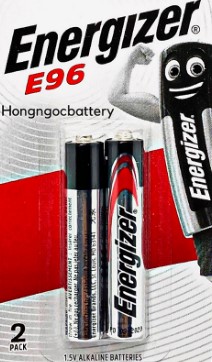A battery is a device that converts chemical energy into electrical energy. Batteries are made up of two or more cells, which are small, individual batteries. When a battery is connected to an electrical device, such as a light bulb, the cells in the battery work together to create an electrical current.

Batteries come in all shapes and sizes, from the tiny batteries used in hearing aids to the massive batteries that power electric vehicles. They are one of the most important pieces of technology in the world, and yet many people know very little about them. Here are ten interesting facts about batteries that you may not have known.
10 Interesting Facts About Batteries
The earliest known battery dates back to around 2000 years ago and was found in the present day. This ancient battery could produce up to 2 volts of electricity and its use was unknown. It is thought that the battery may have been used for electroplating, which is a process that uses electric current to coat a metal with a thin layer of another metal. However, it is also possible that the battery was used for other purposes, such as medical treatment or pain relief.
Who knew that batteries could be made from food? It turns out that many common kitchen items can be used to create a working battery. All you need is a lemon, a zinc nail, and a copper Penny. Start by inserting the zinc nail into the lemon. Then, use the Penny to connect the zinc nail to the copper wire. That’s it! You’ve now created a working battery that can power small devices like LED lights. And best of all, it’s completely safe and non-toxic.
Tesla’s Gigafactory is a colossal battery production facility near Reno, Nevada, and it’s almost fully operational. The Gigafactory will be able to produce more lithium-ion batteries in a single year than were produced worldwide in 2013 when it reaches full capacity. That’s an incredible feat, and it’s all thanks to the Gigafactory’s cutting-edge design and massive scale. In addition to batteries, the Gigafactory also produces solar panels and other Tesla products.
Disposable electronic cigarettes are often marketed as a more convenient alternative to traditional cigarettes. However, many people don’t realize that these disposables contain perfectly good rechargeable lithium-ion batteries. In fact, the cost of the battery is often one of the biggest components of the disposable price. And once the battery is used up, the entire disposable must be thrown away. Not only is this a waste of resources, but it also creates electronic waste that is difficult to recycle.
Batteries are often thought of as being disposable, batteries can actually last for decades with proper care. The key to prolonging the life of a battery is to keep it charged. When a battery is allowed to discharge fully, it will suffer from what is known as “memory loss.” This means that the battery will no longer be able to hold a full charge, and its overall lifespan will be shortened. However, by keeping a battery regularly charged, you can help to ensure that it retains its full capacity for many years to come. With proper care, your batteries can easily outlive you.
A battery that will last centuries? It sounds like something out of a science fiction novel. But recent advances in materials science have made this futuristic dream a reality. Scientists have developed a new type of battery that uses nuclear waste and artificial diamonds to create a virtually limitless source of energy. The key to this technology is in the diamonds. By synthesizing diamonds with a distinctive lattice structure, scientists have created a material that is incredibly durable and efficient at conducting electricity. When combined with nuclear waste, this artificial diamond can create a battery with an unprecedented lifespan. And because the materials used are already abundant, this technology has the potential to change the way we power the world.
The 9-volt battery was introduced in the 1950s as a way to improve portable transistorized radios. These radios had lower voltage requirements than the originals, and the 9-volt battery was able to provide the power needed without being too large or heavy. The introduction of the 9-volt battery made it possible for people to take their radios with them wherever they went, and it quickly became a popular choice for portable electronics. Today, the 9-volt battery is still a popular choice for portable devices, and it remains an essential part of many electronic devices.
The world’s biggest rechargeable battery is located in Fairbanks, Alaska. The battery, which is powered by the city’s hydroelectric plant, provides enough energy to power the whole city for up to 24 hours during outages. The battery is also used to help meet peak demand during periods of high electricity usage. As a result, the battery plays an essential role in ensuring that the city’s electricity supply is reliable and safe.
Every year, Americans throw away billions of batteries. While it’s easy to simply toss them in the trash, this can be harmful to the environment. However, there is a better way to dispose of old batteries: recycling them into fertilizer. When batteries are recycled, the lead and heavy metals are removed and the remaining plastic is burned off. This leaves behind a fine powder that is rich in phosphorus and potassium, two nutrients that are essential for plant growth. The powder is then mixed with water and applied to fields as a fertilizer. This helps to improve crop yields and reduce environmental pollution.
Believe it or not, there is such a thing as a Quadruple-A battery. Also known as an AAAA battery, this tiny power source is often used in electronic devices like laser pointers and tablet styluses. While AAA batteries are the most common type of batteries, AAAAs are actually quite rare. This is because they require a very specific type of device to function properly. As a result, AAAAs is not always easy to find.





